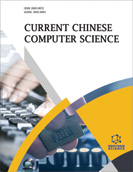
Full text loading...
We use cookies to track usage and preferences.I Understand
Background: Crop diseases are a primary hazard to nutrient safety, which proves to be a serious problem in many places in the world due to the unavailability of essential aid. Typically agriculturalists or specialists perceive the plants with a naked eye for detection and identification of an illness. Machine vision models, in specific Convolutional Neural Networks (CNNs) have directed an impact in feature extraction to a greater extent. Since 2015, numerous solicitations for the automatic classification and recognition of crop illnesses have been established.
Methods: In this paper, we proposed, analyzed, and assessed various state-of-the-art models proposed over a decade. These models are pre-trained with the finest parameters where we modeled a design-oriented method with numerous leaf-images and classified them into infection and healthy class for each type of leaf independently.
Results: Through our examination, we concluded that VGG models stand-alone with many cited prototypes and give on par results. As declared, these VGG models (VGG16 and VGG19) are utilized for feature extraction, and further, we augmented a set of dense layers and train them consequently for classification. The performances of various machine vision prototypes were pictorially perceived and their sophisticated architecture is not only capable of extracting detailed features but also repressed many loop-holes. The performance is assessed and computed for several types of leaf images and the accuracy scores attained were more than 97.5% for VGG16 and 96.72% for VGG19.
Conclusion: AUC-ROC curves were portrayed to illustrate its inspiration in defining an accurate classification where VGG16 and VGG19 have at least 96.6% and 95% area under the curve (AUC) which resembles their robustness.

Article metrics loading...

Full text loading...
References


Data & Media loading...

